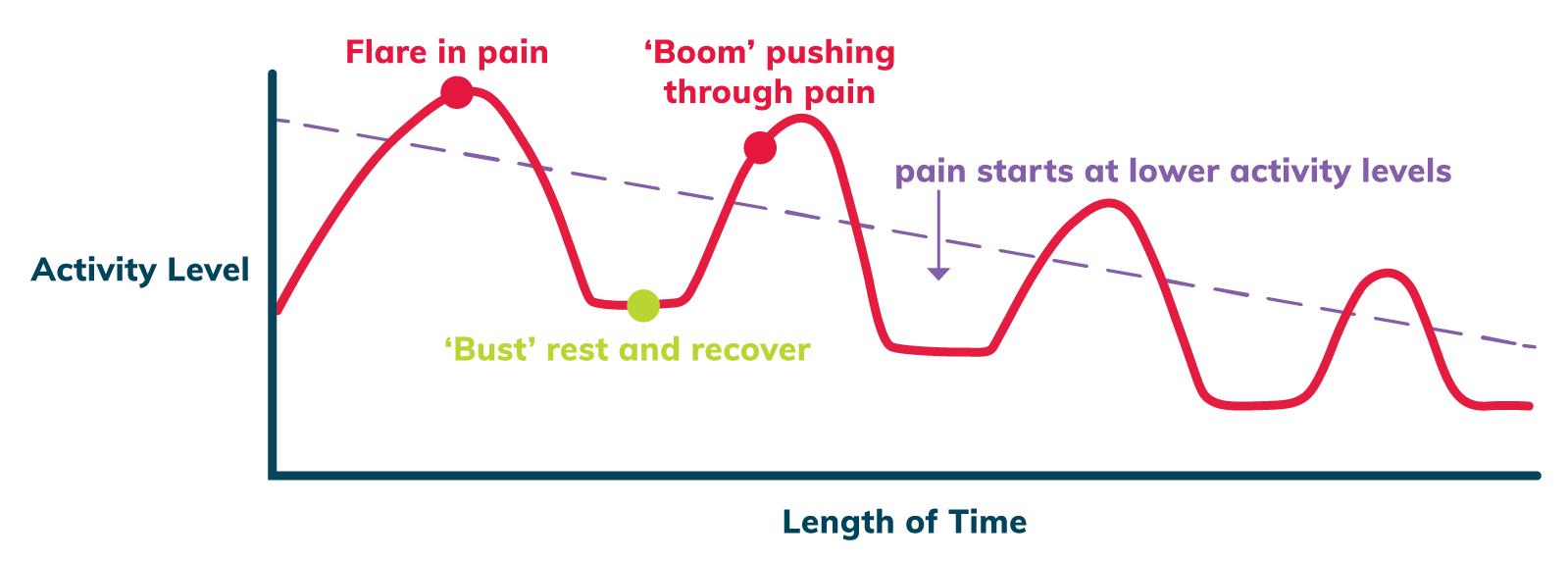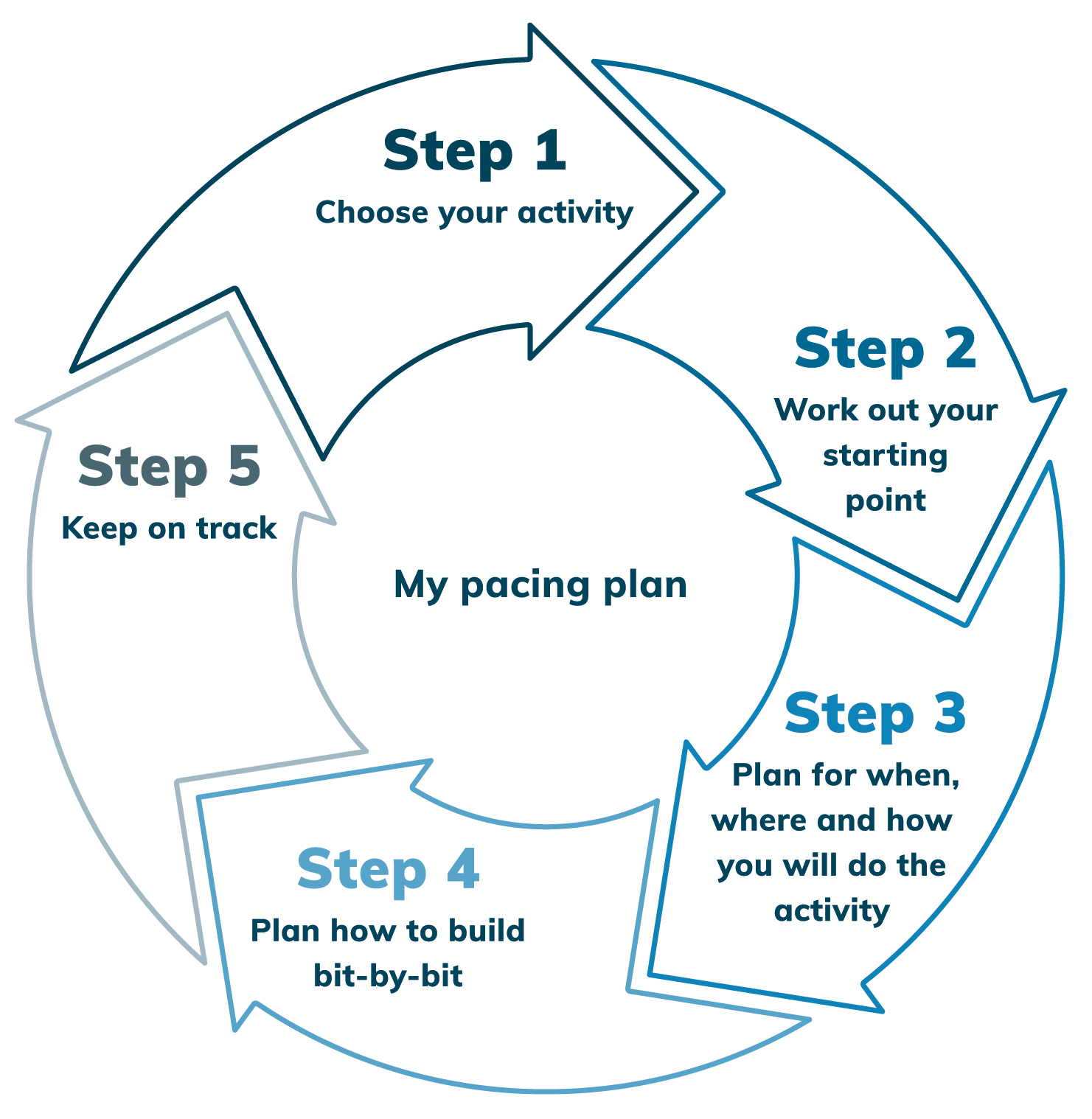
Pacing – learning to do a little bit often
Are there activities you don’t do anymore because you worry it will flare up your pain? Are you someone who pushes through the pain, overdoing it and then you struggle to get out of bed the next day? These patterns of rest and overactivity are common with chronic pain.
Often when you have chronic pain, over time you might cut down on your physical activity because you are not able to do the same activities you could do before. Sometimes, as soon as the pain increases you might stop, or you might push through the pain and overdo things. This leaves you out of action for a few days. This can easily become an unhelpful pattern of rest and over-activity. All this means is that over time, you do less physical activity and your body is less able to do the same level of activity that you could do before. Along with this, often your muscles become tense, your joints stiffen, your fitness goes down and this impacts on your mood and day-to-day life. This all makes your pain worse.

One way to deal with this problem is to pace your activities, that is, to learn to do a little bit, often. This can take extra work and planning, but it is one of your key tools to manage your pain. Pacing means deciding on or setting the amount of physical activity you will do every day given your current level of fitness, regardless of pain. It is not resting too much or overdoing it but finding a workable balance between the two.
Instead of all the ups and downs, when you pace, you will build your activity levels and fitness slowly over time. It can be hard to slow yourself down or remember to stop your activity after a set time, but it is key to stopping this cycle.
How to pace your activities
These are the five steps you need to build your activity level slowly over time.

Step 1 – Choose your activity
Select an activity that you enjoy and would like to do more of – often it is better to start with something easier first. For example, walking, reading, being able to play with your children, sitting longer, playing sport, doing household chores, swimming, or driving.
Step 2 – Work out your starting point
Find out what your baseline level is for this activity. For example, your baseline is how far can you walk comfortably before your pain gets worse. Track your activity for at least three days (on both good and bad days) and work out the average to get your baseline.
Step 3 – Plan for when, where and how you will do the activity
Be clear about how, when and where you will do the activity. The more details you include, the more likely it will be that you will do the activity.
Step 4 – Plan how to build bit-by-bit
Plan how you will grow your activity level over time. After you’ve started, you need to slowly increase either the time, the distance, the repetitions or the intensity of the activity bit-by-bit. Only increase when you feel comfortable with, but a good rule of thumb is to increase by 10% each week.
Step 5 – Keep on track
Write down your progress and talk about it with someone you trust, like your family, carer or health care worker. This will help to keep you on track and show your progress.
Remember, you can use pacing to increase your level of activity and fitness, which will help your overall sense of wellbeing. The gains are up to you, but keep in mind that a small amount of regular activity is better than none or doing too much and flaring up your pain.
Now it is your turn to have a go. Read the Pacing guide then take the time to make your My pacing plan so you can get back to the activities you enjoy and learn to Be Pain Smart.